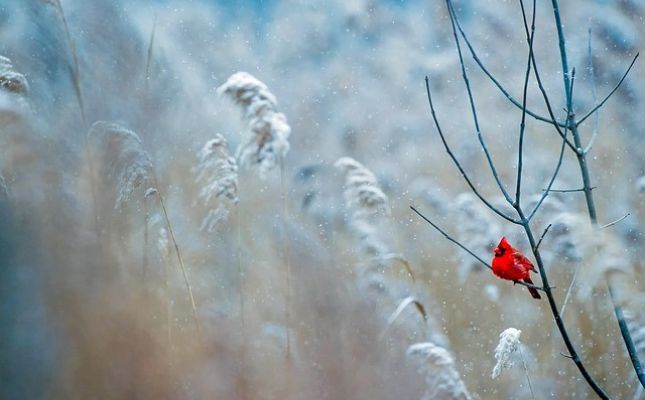
Why Winter Feeding of Birds is Important
Share
Why Feeding Birds in Winter is Essential for Birdwatchers and Conservationists
As the colder months approach and outside begins to get frosty, many birdwatchers shift their attention from fall migration to the winter survival of local birds. Feeding birds during winter isn’t just a way to attract them to your backyard—it’s critical for conservation and survival. November is the perfect time to observe National Birdwatching Month and set up feeders.
The Challenges Birds Face in Winter
When winter arrives, natural food sources for birds like insects, seeds, and berries become scarce. Frozen ground and snow-covered landscapes make foraging much harder, especially for non-migratory species that rely on year-round resources. Attracting birds with feeders is not only a way to ensure they have enough food but also a chance to provide them with much-needed calories to stay warm and survive wintery weather.
What You Need to Know about Attracting Birds with Feeders:
Setting up bird feeders in your yard during winter can create a thriving habitat for local species, but not all feeders or food types are created equal. Here’s how you can maximize the number of birds visiting your backyard while ensuring you’re giving them proper nutrition:
1. Choose the Right Feeder Types
Different birds are attracted to different feeders. If you want to attract a variety of species, it's best to offer several types of feeders:
- Tube feeders: Great for small birds like chickadees, finches, and sparrows.
- Platform feeders: Ideal for larger birds such as cardinals, jays, and doves.
- Suet feeders: Provide high-energy food for woodpeckers, nuthatches, and wrens.
These feeders cater to specific bird species, and having a variety of options ensures you're helping more.
2. Offer the Right Winter Foods
The key to helping birds during winter is offering calorie-dense foods that provide them with the energy they need to stay warm. Some excellent choices include:
- Black oil sunflower seeds: A favorite for most bird species due to their high fat content and thin shells, which make them easy to eat.
- Suet cakes: Packed with fats and proteins, suet cakes help birds maintain energy in freezing temperatures.
- Peanuts (unsalted): An excellent source of protein for birds like woodpeckers, jays, and chickadees.
- Niger (thistle) seeds: These tiny seeds attract finches and are high in oil content.
- Cracked corn and millet: These grains appeal to ground-feeding birds like doves and sparrows.
3. Always Provide Fresh Water (and don't forget)
In winter, water can be as scarce as food. Offering a heated birdbath ensures that your feathered friends have access to fresh, unfrozen water, which is crucial for drinking and bathing. Keeping water available will not only attract birds to your yard but also ensure their feathers stay clean and functional for insulation.
Birdwatching Thrives in Winter
Many people think of winter as a time when you do less birdwatching, but it’s actually a prime season to observe different species that may not visit your feeders during the warmer months. Some bird species that migrate south for winter may pass through your area, while local birds like chickadees, cardinals, and nuthatches become more reliant on backyard feeders. Setting up a cozy window-watching spot with your binoculars and a warm drink can lead to some of the most rewarding birdwatching experiences of the year.
Winter birdwatching also fosters a deeper connection to your local environment. It’s an opportunity to observe how birds adapt to harsh conditions and will rely on our feeders for survival. By attracting birds with feeders, you’re not only supporting conservation but also creating a deeper relationship with nature, all in your yard.
November is National Birdwatching Month: Start a New Tradition
With National Birdwatching Month happening every November, there's no better time to get involved in feeding and observing birds. This month-long celebration encourages people to appreciate birds, contribute to their conservation, and enjoy birdwatching.
For seasoned birders, it’s the perfect time to introduce new friends or family members to birdwatching and explain why feeding birds during winter is an important conservation effort. Even if you’re new to birdwatching, just setting up one feeder and watching local birds rely on your backyard as a haven can spark a lifelong passion.
Eco-Conscious Bird Feeding: Doing Your Part
For those who value eco-consciousness, feeding birds is a sustainable way to contribute to local ecosystems. Consider investing in:
- Recycled material feeders to reduce environmental impact.
- Organic birdseed to ensure you’re feeding birds natural, pesticide-free food.
- Native plant landscaping, which provides year-round food and shelter for birds even when feeders aren’t in use.
By choosing sustainable options, you’re helping protect the environment while providing local bird populations food and shelter.
Conclusion: Make a Difference This Winter
Feeding birds during winter is more than a hobby—it’s an act of conservation. By attracting birds with feeders, providing high-quality food, and providing access to fresh water, you're playing an essential role in their survival during the most challenging season. This winter, let’s make birdwatching more than just a pastime—let’s make it a tradition that supports the birds we love.
